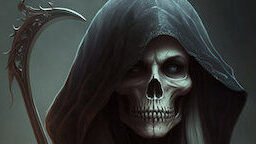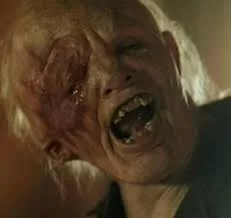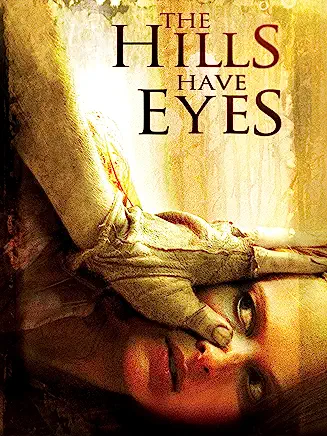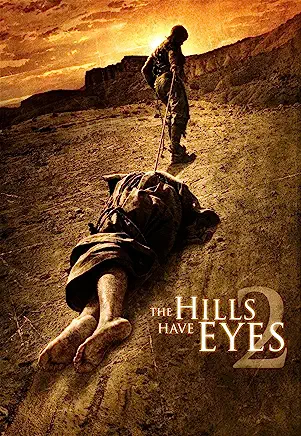It is a hauntingly gripping horror film that delves deep into the darkest corners of the human psyche. Released in 2006 and directed by Alexandre Aja, this unsettling masterpiece is a remake of Wes Craven’s 1977 classic of the same name.
Armed with a sinister storyline, visceral gore, and nerve-wracking tension, the movie remains etched in the minds of horror enthusiasts as one of the genre’s most terrifying experiences. This article dissects the essence of “The Hills Have Eyes,” examining its spine-chilling aspects, its enduring legacy, and the reasons behind its continued popularity.
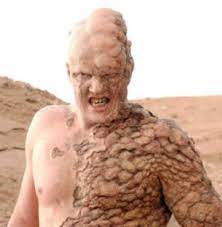
Plot summary
The film follows the Carter family on their way to California for a family vacation. When they decide to take a shortcut through the remote desert of New Mexico, their car breaks down, leaving them stranded in an isolated area with no civilization in sight. Unbeknownst to them, the hills are home to a group of mutated and cannibalistic savages, who have lived there for generations.
As night falls, the Carter family becomes the prey of these sadistic and deranged beings. Fueled by a primal survival instinct, they must face unimaginable horrors and make harrowing choices to protect their lives and loved ones.
Themes of savagery and survival
“The Hills Have Eyes” serves as a stark reminder of the primal instincts buried within human beings. The film explores the theme of savagery, both in the form of the mutants who have regressed into a feral state and the Carter family, who must confront their own savage impulses when pushed to their limits.
The movie delves into the human instinct for survival and how it can strip away the veneer of civilization, reducing even the most civilized individuals to their most primitive forms. This bleak portrayal of survival instinct resonates deeply with the audience, leaving them with haunting questions about their own capacity for brutality in dire circumstances.
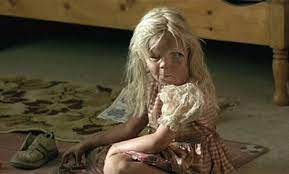
Unrelenting tension and horror
From the moment the Carter family enters the desolate hills, the movie plunges into a relentless and nightmarish atmosphere. Alexandre Aja expertly crafts tension through eerie visuals, ominous music, and spine-chilling performances. The mutants are unsettlingly portrayed, their grotesque appearances, and animalistic behavior inciting fear in the hearts of viewers.
As the family’s desperation intensifies, the mutants’ ruthlessness heightens, culminating in brutal and visceral violence. The graphic and shocking sequences serve as a stark contrast to the serene desert landscape, leaving the audience feeling both repulsed and captivated by the horrors unfolding on screen.
Impact and enduring legacy
“The Hills Have Eyes” is a standout among modern horror films for its unapologetic portrayal of terror and its willingness to explore the darker aspects of human nature. The movie’s success lies in its ability to push the boundaries of what is considered acceptable in the horror genre, leaving audiences unnerved and disturbed.
The film’s impact extends beyond the realm of entertainment. It sparked discussions about the psychological implications of extreme isolation, the effects of radiation exposure, and the ethical dimensions of survival. Additionally, it rekindled interest in the slasher horror subgenre and inspired a wave of remakes of classic horror films.
The mutants
The main mutants are the deformed and cannibalistic inhabitants of the desolate hills. They are the primary antagonists of the film and serve as the source of terror for the stranded Carter family. Here’s a description of the main mutants:
Jupiter (Billy Drago)
Jupiter is the leader of the mutant family and serves as the patriarch figure. He is cunning, ruthless, and has a sadistic nature. Years of living in isolation and exposure to radiation have caused him to become deformed and mentally deranged. He exhibits a predatory intelligence and takes pleasure in hunting and tormenting the unsuspecting victims who cross their territory.
Pluto (Michael Bailey Smith)
Pluto is one of Jupiter’s sons and is one of the more physically imposing mutants. Like his siblings, he suffers from severe physical deformities, including a hunchbacked posture and disfigured facial features. Pluto is characterized by his brute strength and unpredictability, making him a formidable threat to the Carter family.
Big Brain (Desmond Askew)
Big Brain, whose real name is Lizard, is another of Jupiter’s sons. Despite his mutations and lack of intellectual development, he has been nicknamed “Big Brain” due to a bulging tumor-like growth on his head. He is childlike in nature, yet still capable of carrying out violent and disturbing acts under the influence of his family.
Ruby (Laura Ortiz)
Ruby stands out from the other mutants as she is more sympathetic and less hostile toward the Carter family. She is revealed to be Jupiter’s daughter but appears to have a kinder disposition, possibly as a result of being distanced from the family’s violent ways. Ruby’s compassion and desire for a better life make her a complex character torn between loyalty to her family and a yearning for escape.
Mama (Ivana Turchetto)
Mama is the matriarch of the mutant family and Jupiter’s mother. She is a haunting figure and barely communicates, yet her presence is felt throughout the film. Mama’s backstory is shrouded in mystery, but it’s clear that she plays a significant role in shaping the feral nature of the mutants.
Chameleon
Also known as Cyst, is one of the mutants in the film “The Hills Have Eyes.” He is part of the mutant family that inhabits the desolate hills and preys on unsuspecting travelers. Chameleon is given his nickname due to his unique ability to change his appearance by wearing the clothing and accessories of his victims.
Unlike the other more physically imposing mutants, Chameleon possesses a more cunning and stealthy nature. He uses his shape-shifting abilities to blend in with the surroundings and ambush his prey. This makes him a particularly dangerous and elusive antagonist.
Chameleon’s physical appearance is deformed and unsettling, like the other mutants, but his ability to disguise himself adds an extra layer of fear and uncertainty for the Carter family. He embodies the dark and unpredictable forces that lie in the abandoned wastelands, making him a formidable foe for the stranded travelers.
Each mutant possesses unique physical deformities and psychological traits, which contribute to their menacing presence on screen. Their existence in the desolate desert, coupled with their savage behavior, adds to the movie’s terrifying atmosphere and serves as a stark reminder of the consequences of isolation and unchecked violence.
Conclusion
“The Hills Have Eyes” stands as a formidable testament to the power of horror cinema in eliciting raw emotions and confronting uncomfortable truths about humanity. By exploring the themes of savagery and survival, the movie exposes the fragility of civilization and the primal instincts that lie within us all. Alexandre Aja’s unflinching direction and the committed performances of the cast elevate this film to a chilling and unforgettable experience.
Though over a decade old, “The Hills Have Eyes” continues to captivate horror enthusiasts and remains a benchmark for the genre’s evolution. Its ability to shock, terrify, and provoke introspection cements its place as a classic in the pantheon of horror cinema. If you dare to watch it, prepare to descend into a nightmarish journey where the line between man and monster blurs, and the hills hold secrets that will haunt you long after the credits roll.
